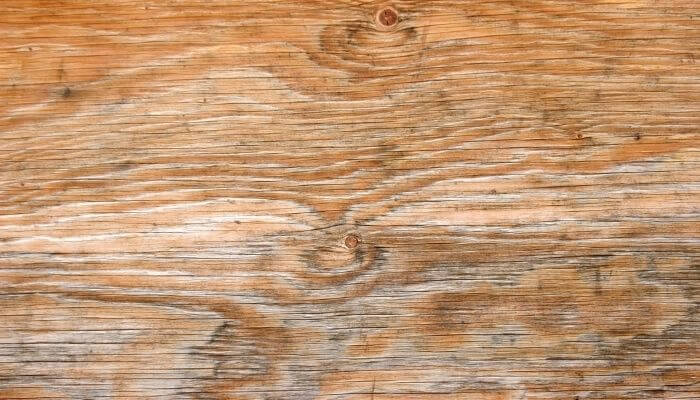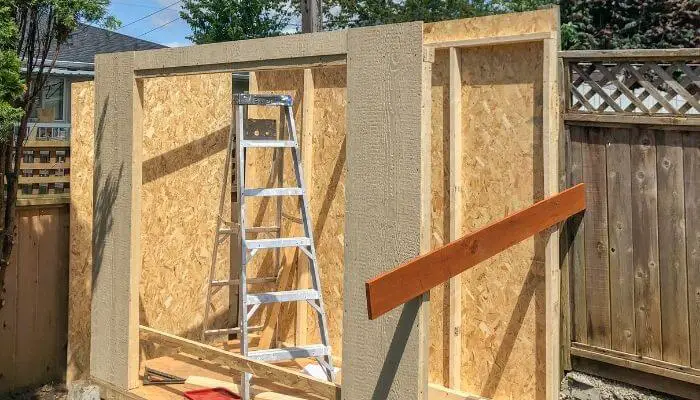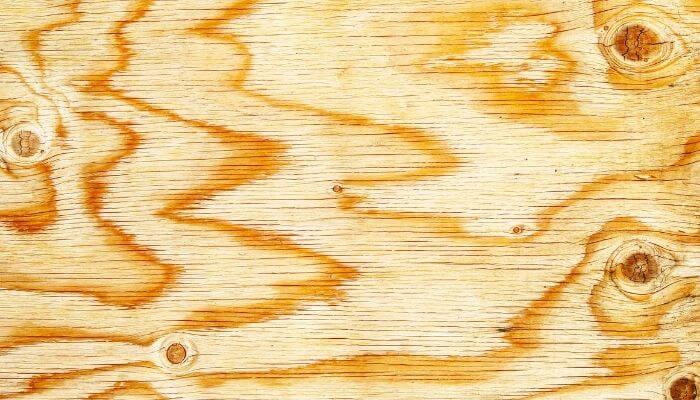Plywood is not waterproof.
It is made up of layers of thin veneers (slivers also known as plies) of wood that are pressed and stuck together using glue.

The glue used is very water-resistant, and the wood used is often far less susceptible to water than something like OSB or MDF (medium-density fibreboard – which is made up from a composite of wood chippings.
MDF can be waterproofed in much the same way as plywood).
Nevertheless, plywood is not waterproof and will even absorb standing water, which does limit its uses in certain applications.
The wood that is used will vary in how water resistant the resulting sheet/panel/plank is.
Depending on how the wood is manufactured, each panel is likely to have its own strength and levels of water resistance.
The glue is pretty water-resistant but will not protect the wood itself from absorbing water, especially around the edges where the wood is most vulnerable to standing water.
If you are looking to use plywood in areas where there may be moisture or high humidity, then you will need to seal and/or make your wood more water-resistant.
The Composition of Plywood
Plywood is made up of multiple layers of sheet material – always an odd number of layers.
Typical plywood consists of three layers and there are versions with five layers and more that are called Multiplex.
The board material is made by drying the individual veneers first, and when these have reached the correct moisture level, they are glued and pressed together at fairly high temperatures.

Both the glue and the individual layers of wood have some natural water resistance.
The outer layers of the wood are often the most expensive and most water-resistant.
Polycondensative adhesives are used to make the wood.
Plywood can be manufactured in a way that ensures one plank is just as strong and/or water-resistant as the next.
There are various grades of plywood governed by two standards. The grades are:
- Class I: suitable for dry interior use only
- Class II: suitable for use in humid areas or exposure to occasional wetting
- Class III: suitable for unprotected exterior use or exposure to frequent wetting
It is important to use the grade suitable for the application as the various grades will not perform beyond their assessed competency.
Ways to Make Plywood Waterproof
The use of plywood in boats suggests that it can be made waterproof.
The most common method for waterproofing plywood is the use of a sealant, this method is commonly used to waterproof plywood subfloors.
Since there are many types of sealant that bond very well with plywood, it is easier to waterproof plywood than most materials.
Bonding is often easy, and most sealants sink into the fibers of the wood, making it stick even harder than it would with something like plaster, plastic, or fibreboard.
Using an epoxy sealer is a very popular way to seal plywood against both water and against outdoor elements like wind, rain and even snow.
It is easy to apply and can be found in spray or paint forms.
The epoxy bonds (sticks) very well and leaves a tough and hard outer layer.
The outer layer is so tough that you can sand it down and little and then paint over it (hopefully with water-resistant paints).

Drying oil is often seen used on boats because it enables the wood to maintain some of its flexibility and durability.
Drying oil doesn’t form as big of a shell around the wood, but it soaks in much deeper and enables the wood to maintain some of its moisture content for longer.
Water-based paint will make your plywood so water-resistant that it may as well be waterproof.
It doesn’t crack or peel very easily, and even though it isn’t as waterproof as epoxy or drying oil, it will keep your wood dry for a very long time if you are using it for something like an outdoor table or decorative wooden object.
Varnish is a mixture of resin and epoxy that forms a thin layer of protective coating.
It does make your wood waterproof for a fairly long time but will suffer if it is exposed to extreme conditions – for example, if you use it in the sea, or if it is exposed to extreme freezing and then summer heatwaves.
You have probably seen older wooden items where the varnish has started to peel off.
Liquid latex makes plywood very water-resistant, and it copes pretty well in varying weather conditions.
It doesn’t have the sort of protective qualities that the oil and/or epoxy formulas have, but it is quite cheap and is good for larger projects where you want a fair amount of coverage.
Already Water-Resistant Plywood
The following paragraph should be treated with caution because some industry experts believe that WBP is a misnomer, and it does not stand up to the claims made of it.
Weather and Boil-Proof plywood is made to be highly water-resistant prior to any sort of treatment.
It can be used in areas where treating the wood may be overly expensive, difficult, or impractical.
You can also buy it simply to use in a humid environment without worrying that it will become overly weak through exposure to moisture in the air.
It is the glue that makes WBP waterproof.
The veneers will only be as waterproof as the variety of wood they are made from.
If you have regular plywood and decide to seal it or waterproof it, then the many options above have varying degrees of efficacy and longevity.
For example, there are paints and sealants that will last twenty years so long as the wood is not exposed to overly harsh environments.

